An agent-based model of online community joining

Jeremy Foote
Northwestern

Benjamin Mako Hill
U. of Washington

Nate TeBlunthuis
U. of Washington

Aaron Shaw
Northwestern
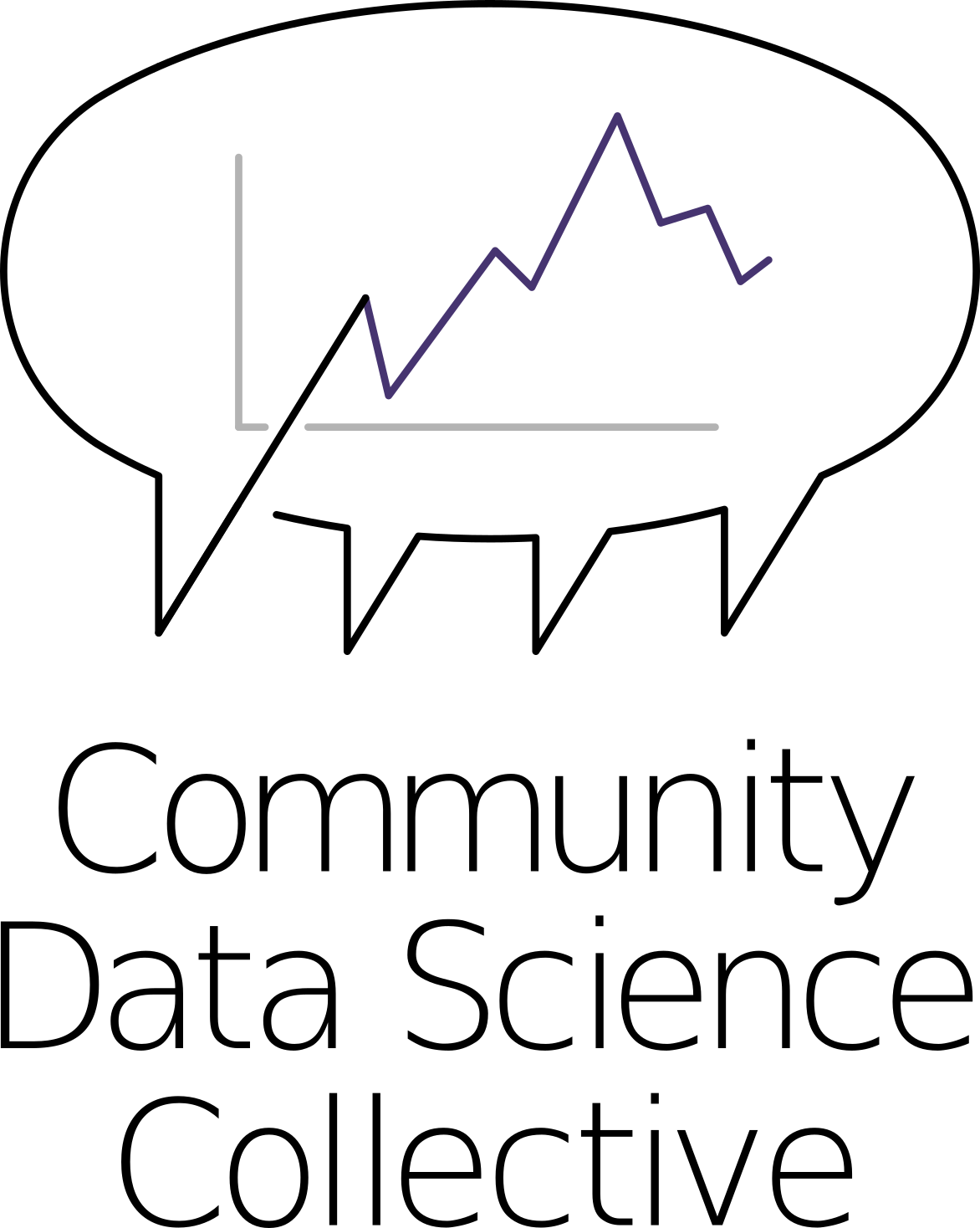
Research Agenda
How does the technical, social, and communication context influence collective action decisions (and vice versa)?
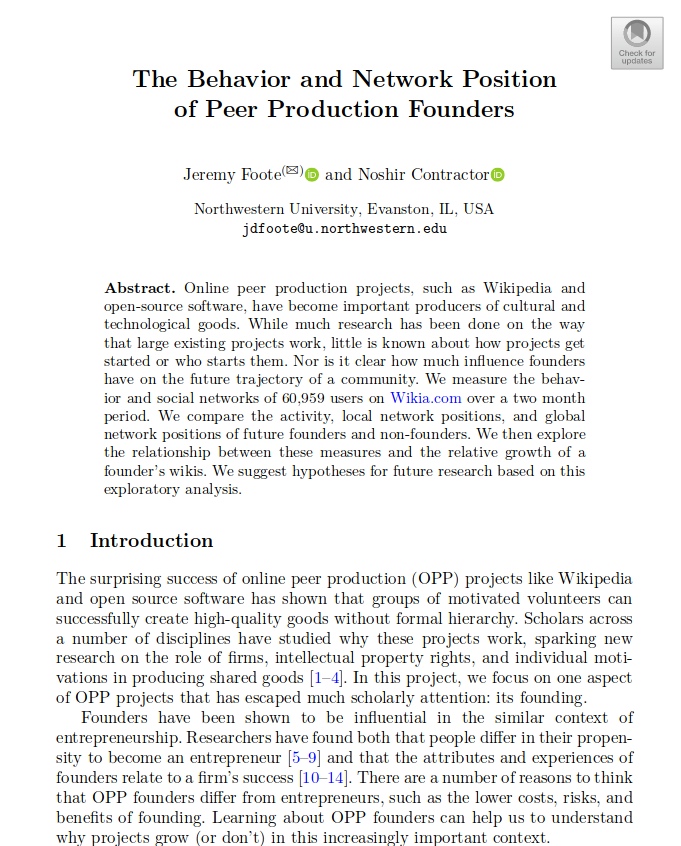
Foote and Contractor, “The behavior and network position of peer production community founders, iConference 2018
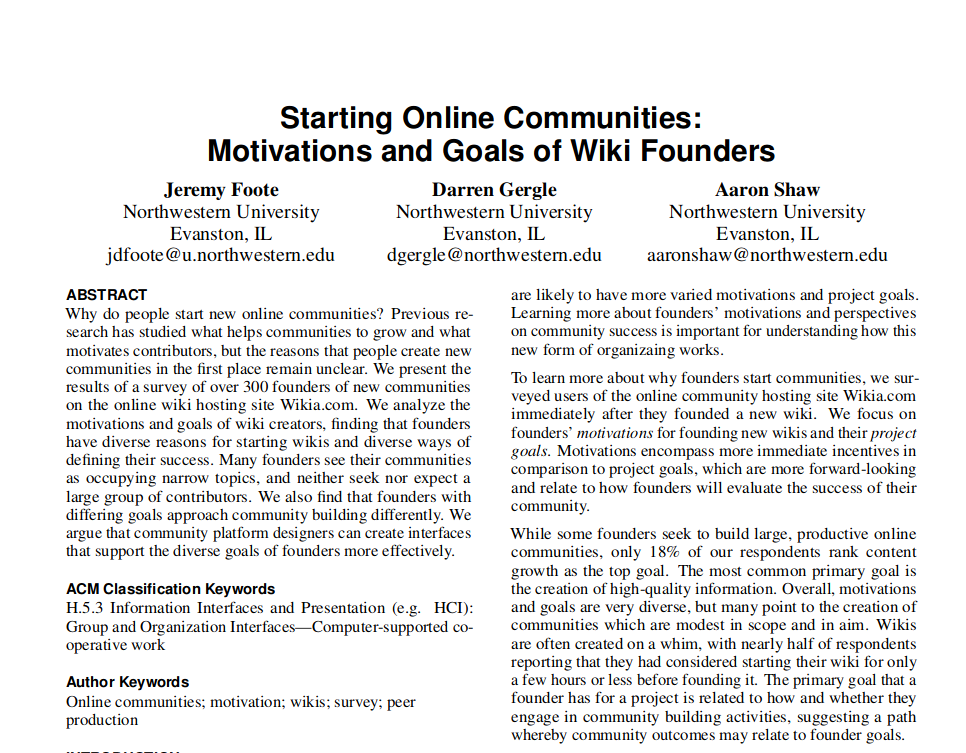
Starting Online Communities: Motivations and Goals of Wiki Founders, CHI 2017
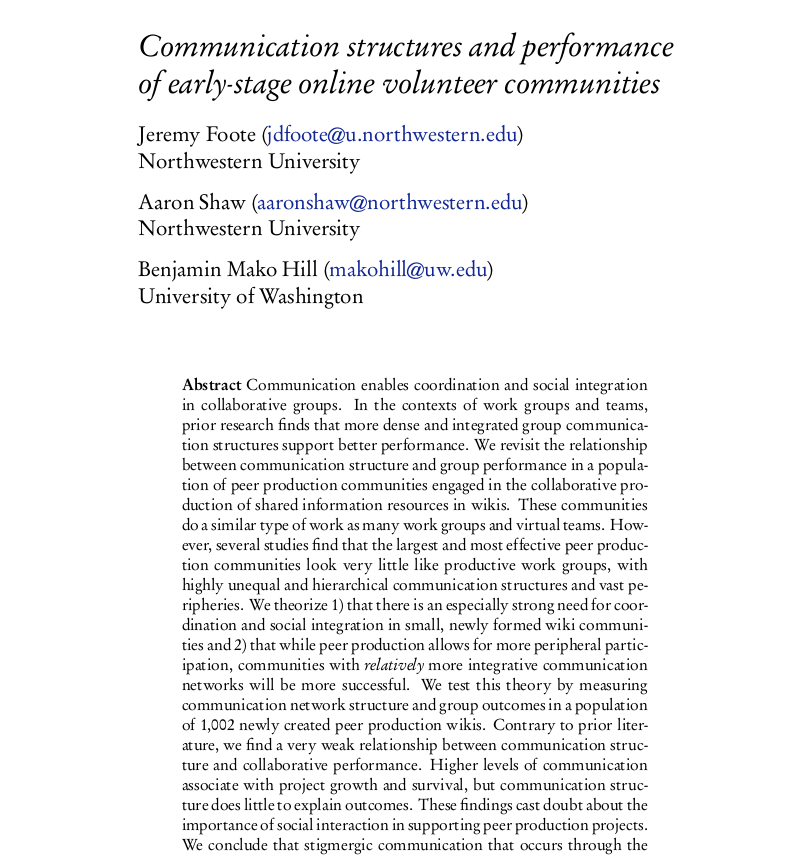
Communication structures and performance of early-stage online volunteer communities, In preparation
How do we decide which groups to join?
Groups size distributions vary
Universities are log-normally distributed
Data from Wikidata
Online group sizes have long-tail distributions

Data from Stuck_in_the_Matrix on BigQuery
The number of groups each user belongs to is also long-tail

Data from Stuck_in_the_Matrix on BigQuery
Why?
What decision-making processes could produce these outcomes?
A simple model that produces long-tail distributions
Preferential Attachment (Barabási, 1999)
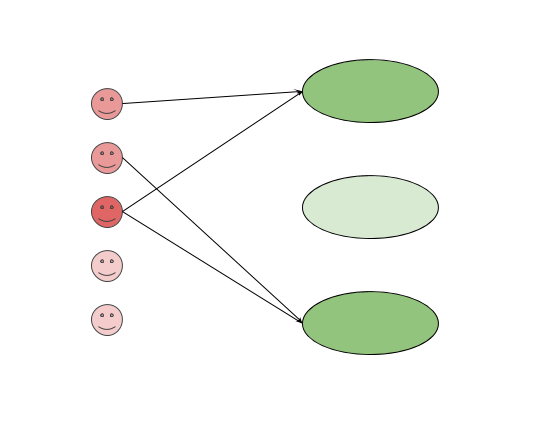
One small problem
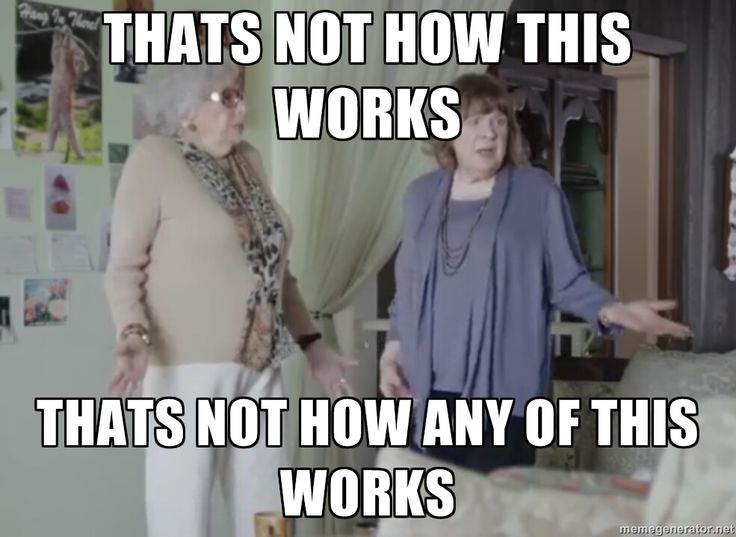
A (more) believable model
Three processes
- Consideration
- Exposure
- Decision
Agent-based modeling
- Simplified, simulated system of interacting agents
- Allows us to:
- Explicitly model micro processes
- Test the macro-level implications of theories
- Move from equations to agents
Our agent-based model
- Start with \(N\) potential contributors and \(X\) potential communities
- Every month:
- \(n\) users are chosen (consideration)
- Each user is presented with an “exposure set” of \(x\) communities (exposure)
- The user decides which communities to join (decision)
Simulations Results
Random processes aren’t consistent with empirical data


Random exposure processes cannot produce long-tail distributions


Word of mouth exposure through Communication Networks
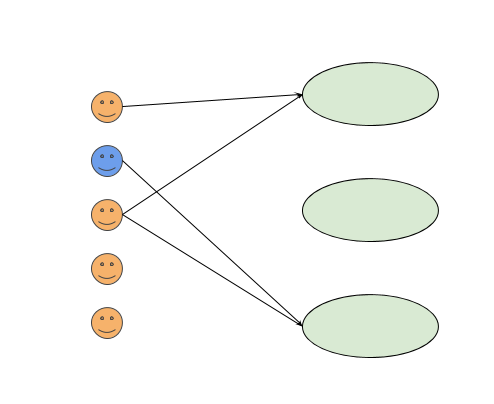
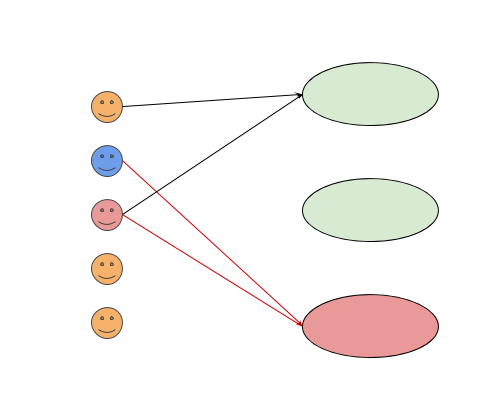

Word of mouth exposure models look similar to Reddit


We can make the decision algorithm more realistic
- Based on expected value of joining (Resnick et al., 2011)
- People use past communities to fit a model of how large their current set will be
- They prefer to:
- Join communities early
- Join large communities
- But there are costs to join and to participate
A word of mouth exposure model plus a “learning” model looks roughly like Reddit


Conclusion
Agent-based modeling and theory-building
- Simulation is a great tool for modeling organizational processes
- Exposure processes are important but understudied
- Communication networks provide a plausible mechanism
Future work can validate our models
- Surveys and experiments
- How are people exposed to new communities?
- How do they decide which to join/leave?
- Explaining other patterns of participation (e.g., plateau of group membership over time)
The End
Thanks!

Jeremy Foote
@jdfoote

Benjamin Mako Hill
@makoshark

Nate TeBlunthuis
@groceryheist

Aaron Shaw
@aaronshaw

Appendix
Decision algorithms
- Random
- Biggest
- Linear growth
- Recent growth
- Learning model
Learning model
- Agents fit a regression model on previously joined communities
- They then predict the growth of their current choice set
Utility
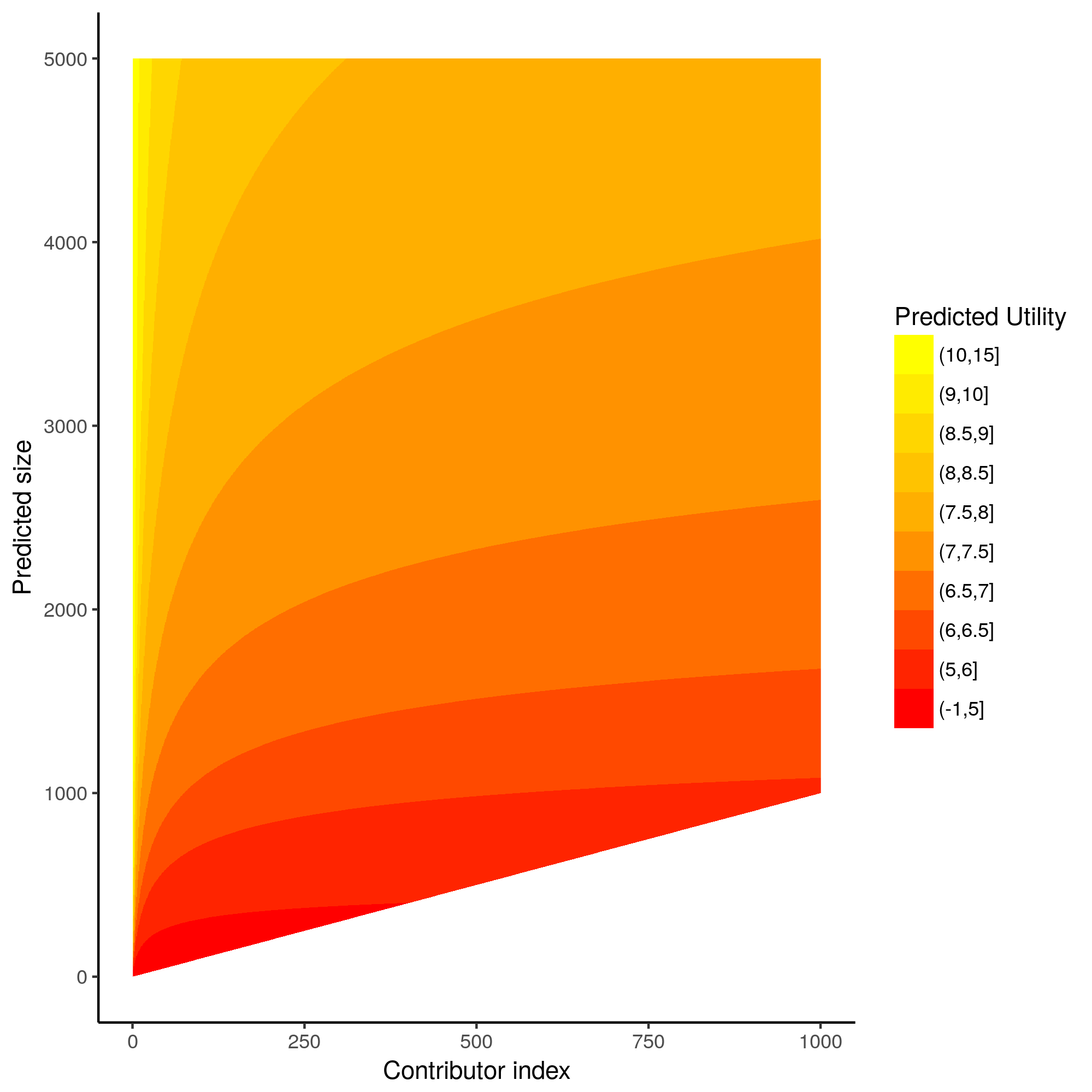
Utility
- Participation benefits (PB)
- \(PB = log(S + 1)\)
- Early adopter benefits (EA)
- \(EA = log(S + 1)/log(i + 1)\)
- Cost = \(X\)
- \(U = PB + EA - C\)
Learning model:
\[\begin{align} log(growth) &=\beta_0 + \beta_1 \times S_j + \beta_2 \times A_j \\\ &+ \beta_3 \times (A_c - A_j) + \beta_4 \times S_c \end{align}\]- \(S_c\) = current size, \(A_j\) = age when joined
- Predicted size after 6 months
All models - community sizes

All models - communities per person

A few problems
- Doesn’t explain how people estimate future growth
- Not derived from empirical data
- Only applies to single decision
Adding communities
- Adding communities every month is a start

But it’s not enough

Results

Adding popularity
- The choices that people consider are weighted by popularity
Limitations and challenges
–>